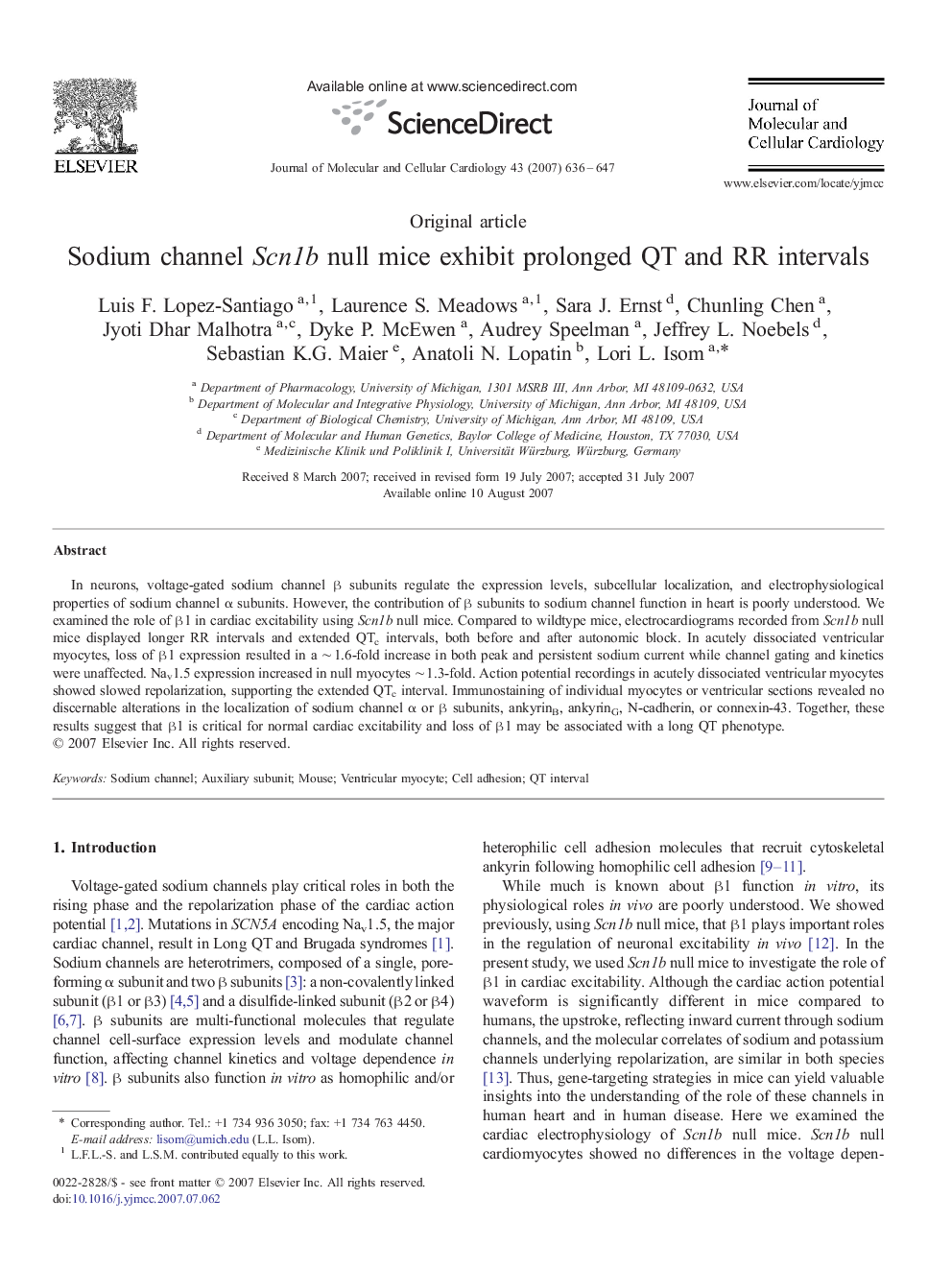| Article ID | Journal | Published Year | Pages | File Type |
|---|---|---|---|---|
| 2191821 | Journal of Molecular and Cellular Cardiology | 2007 | 12 Pages |
In neurons, voltage-gated sodium channel β subunits regulate the expression levels, subcellular localization, and electrophysiological properties of sodium channel α subunits. However, the contribution of β subunits to sodium channel function in heart is poorly understood. We examined the role of β1 in cardiac excitability using Scn1b null mice. Compared to wildtype mice, electrocardiograms recorded from Scn1b null mice displayed longer RR intervals and extended QTc intervals, both before and after autonomic block. In acutely dissociated ventricular myocytes, loss of β1 expression resulted in a ∼ 1.6-fold increase in both peak and persistent sodium current while channel gating and kinetics were unaffected. Nav1.5 expression increased in null myocytes ∼ 1.3-fold. Action potential recordings in acutely dissociated ventricular myocytes showed slowed repolarization, supporting the extended QTc interval. Immunostaining of individual myocytes or ventricular sections revealed no discernable alterations in the localization of sodium channel α or β subunits, ankyrinB, ankyrinG, N-cadherin, or connexin-43. Together, these results suggest that β1 is critical for normal cardiac excitability and loss of β1 may be associated with a long QT phenotype.
